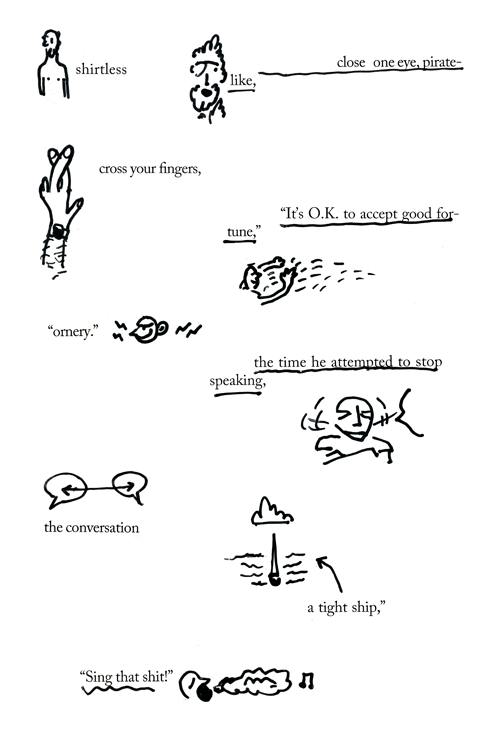
These are little phrases I doodled next to in a terrific Will Oldham article in the New Yorker. I erased everything surrounding and collaged them together. Just a little experiment. Just goofing around…

These are little phrases I doodled next to in a terrific Will Oldham article in the New Yorker. I erased everything surrounding and collaged them together. Just a little experiment. Just goofing around…
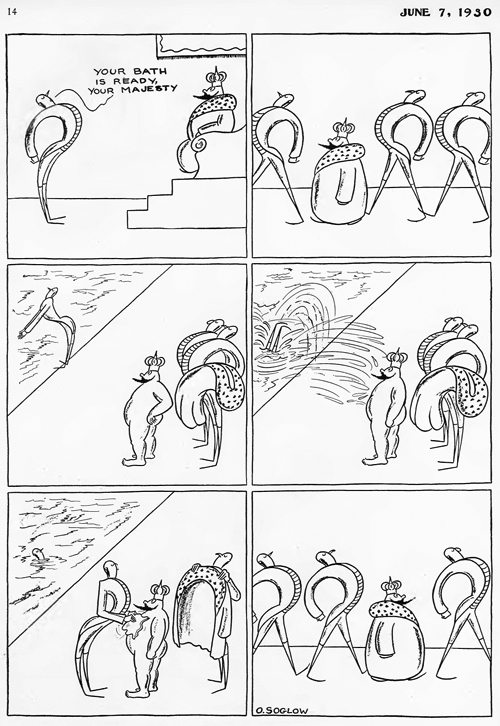
As Eddie Campbell pointed out, the new Comics Journal #286 features a 5-page essay and 37 color Sundays of Otto Soglow’s strip, “The Ambassador”, which first began life as “The Little King” in the pages of the New Yorker:
In the middle of 1930, Soglow introduced a new character that would launch the next stage of his career, an unnamed and silent King who trudges through his daily offices in a daze, longing for any excuse to step away from it all, even if just to pick up the milk at the castle door. By 1931, the “Little King,” as he came to be known, was a regular feature in the magazine’s pages, caught up in absurd rituals and ceremonies and longing to break away to the open road. The joke, for those who cared to look for it, depended primarily on Soglow’s long-running theme: In a society in which individuals are imprisoned by social categories like class, gender and sexuality, everyone is wearing costumes that fit as poorly as the King’s crown. Our little king no more belongs on the throne than Bill’s unnamed colleague belonged in the sewer. The King always jumped at any excuse to join the staff in the kitchen, to slide down the banister, even, in the last Little King cartoon for the New Yorker in 1934, to join the people in rioting against his monarchy.
But the King would not escape his crown so easily. Soglow’s Little King cartoons had attracted the attention of William Randolph Hearst, who determined to have Soglow and his King for his own empire. Hearst had become increasingly interested in silent comics, having acquired Milt Gross, author of the pioneering silent graphic novel, He Done Her Wrong (1930), and launching Carl Anderson’s largely silent Henry in 1932. The resurgence of pantomime comics in the early 1930s is an interesting phenomenon in its own right, especially given that it coincided with the rise of sound film. Just as the movies learned to talk, comics began to experiment with what they could accomplish without words….
…the New Yorker had another year on its contract for the character. And so Soglow was asked to create another title as a kind of placeholder until Little King could at last complete his move from magazine to newspaper. Appropriately, Soglow created his forerunner for the King’s arrival in the form of an Ambassador, and he used his first newspaper strip much as a diplomat might utilize a fact-finding mission to lay the groundwork for a royal visit. Soglow had worked almost exclusively in magazines up to this point, and the newspaper format was both exciting and somewhat overwhelming, as the early, somewhat stiff pages suggest. The Little King had appeared only occasionally in his years at the New Yorker, and now he would be expected to appear weekly. And so the Ambassador — a barely disguised version of the King himself — served as a stand-in, a place for Soglow to develop the character and his potential and to explore the possibilities (color, movement, scale) of the new medium.
I really, really love Soglow’s work, so I thought I would share a few of the original Little King strips that ran in the New Yorker.
The Little King sliding down a banister:
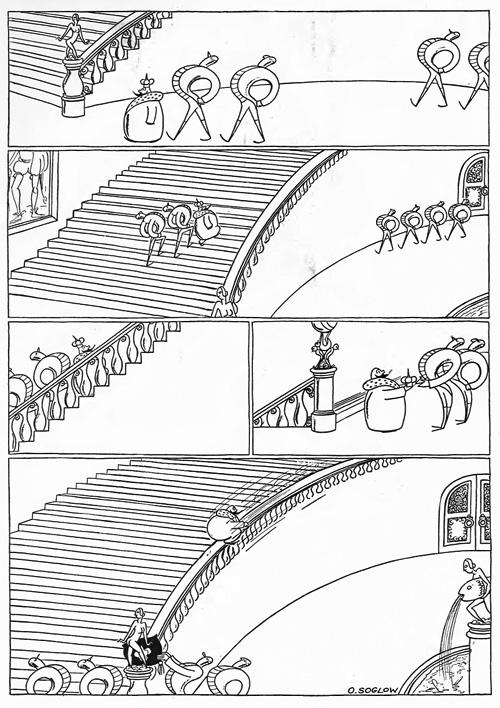
The Little King running away with gypsies:
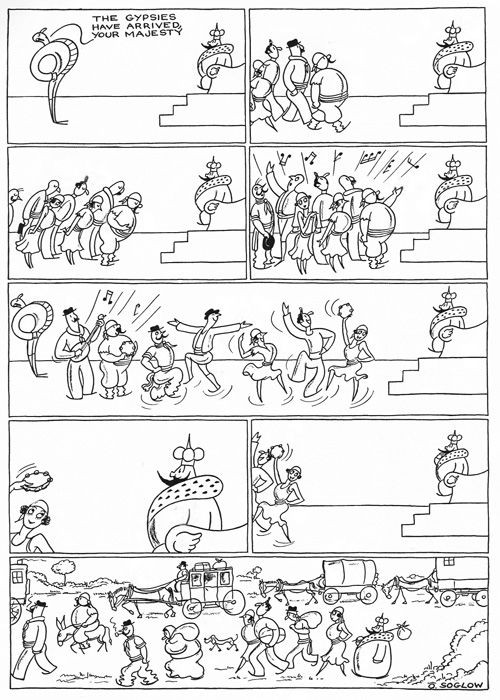
The Little King losing a golf ball:
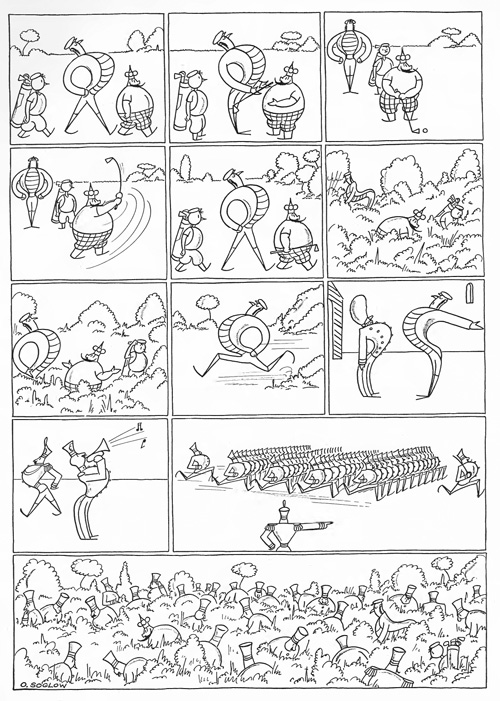
It’s worth noting that several of the strips were broken up and presented across a two-page spread:
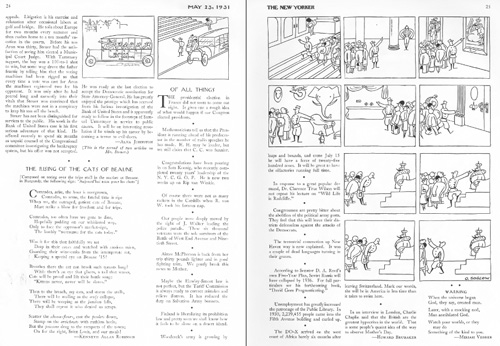
And that several of them can be quite tender. Here, The Little King sheds a tear after being snubbed by a janitor:
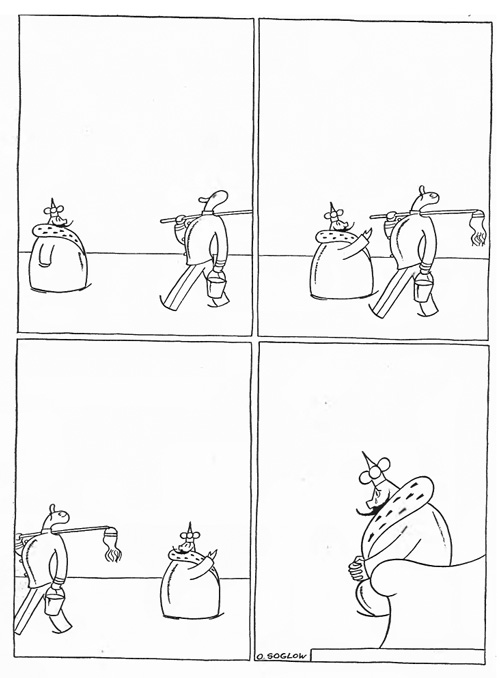
And here, he contemplates the moon while the queen sleeps (I can relate):
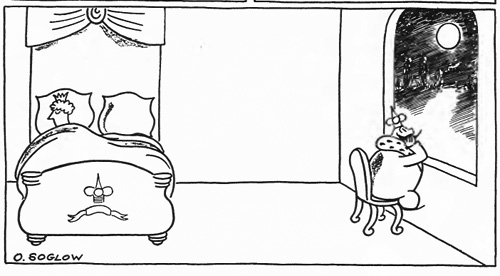
Much of the development of Soglow’s style is explicitly attributed to his association with the New Yorker:
Harold Ross had founded his magazine in 1925, and Soglow began contributing the very next year. Ross wanted the comics in his new magazine to have a very different look than those of its illustrated predecessors: magazines like Puck and the original Life, with their Victorian crosshatchings and labored captions. He wanted the art in the New Yorker to serve as a visual representation of the modernist style he wished to capture, and he encouraged his cartoonists to reduce their work to the absolute minimal number of strokes and words.
The match was a good one for Soglow, who was at this time experimenting with “eliminating lines that I felt weren’t necessary.” Soglow’s earliest work for the New Yorker showed the influence of his fine-arts training and a rather conventional approach to the magazine comic, but quickly, under the influence of Ross and the artists at the magazine, Soglow began to develop what became his signature style: sequential comics, single-line drawing and minimal text.
In the very last Little King strip that ran in the New Yorker, the monarch riots along with the people:
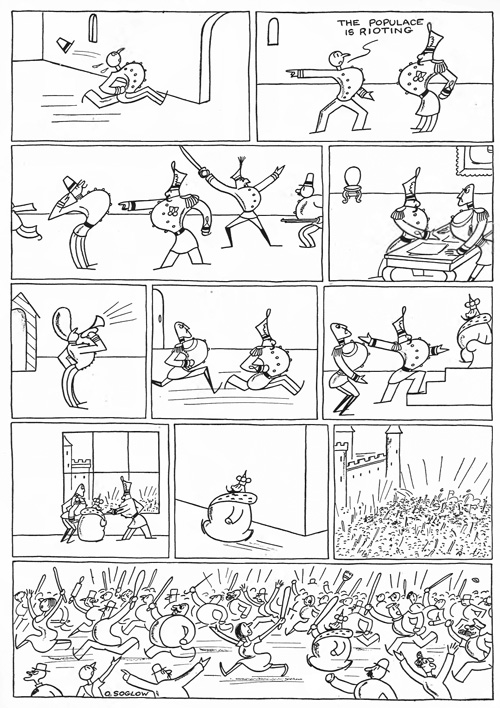
And whether you noticed or not, if you’re a regular New Yorker reader, you get a dose of Soglow’s drawings every week: while Soglow was with the New Yorker, he drew every one of the small drawings that appeared at the beginning of each Talk of the Town article, and the magazine has been reusing the drawings ever since his death (over 25 years).
Soglow’s obituary from 1975:
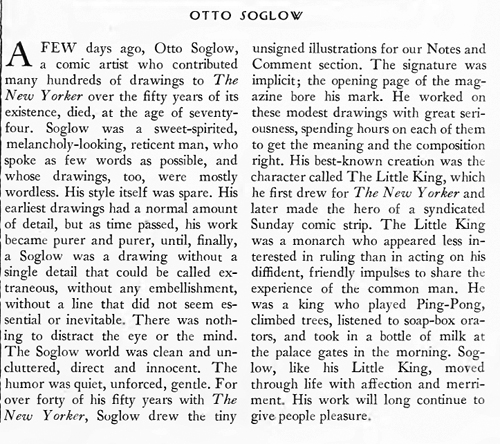
Further reading:
The Comics Journal – Otto Soglow and The Ambassador (excerpt)
We All Go Soglow: a bunch of good scans of Soglow’s work
This site participates in the Amazon Affiliates program, the proceeds of which keep it free for anyone to read.